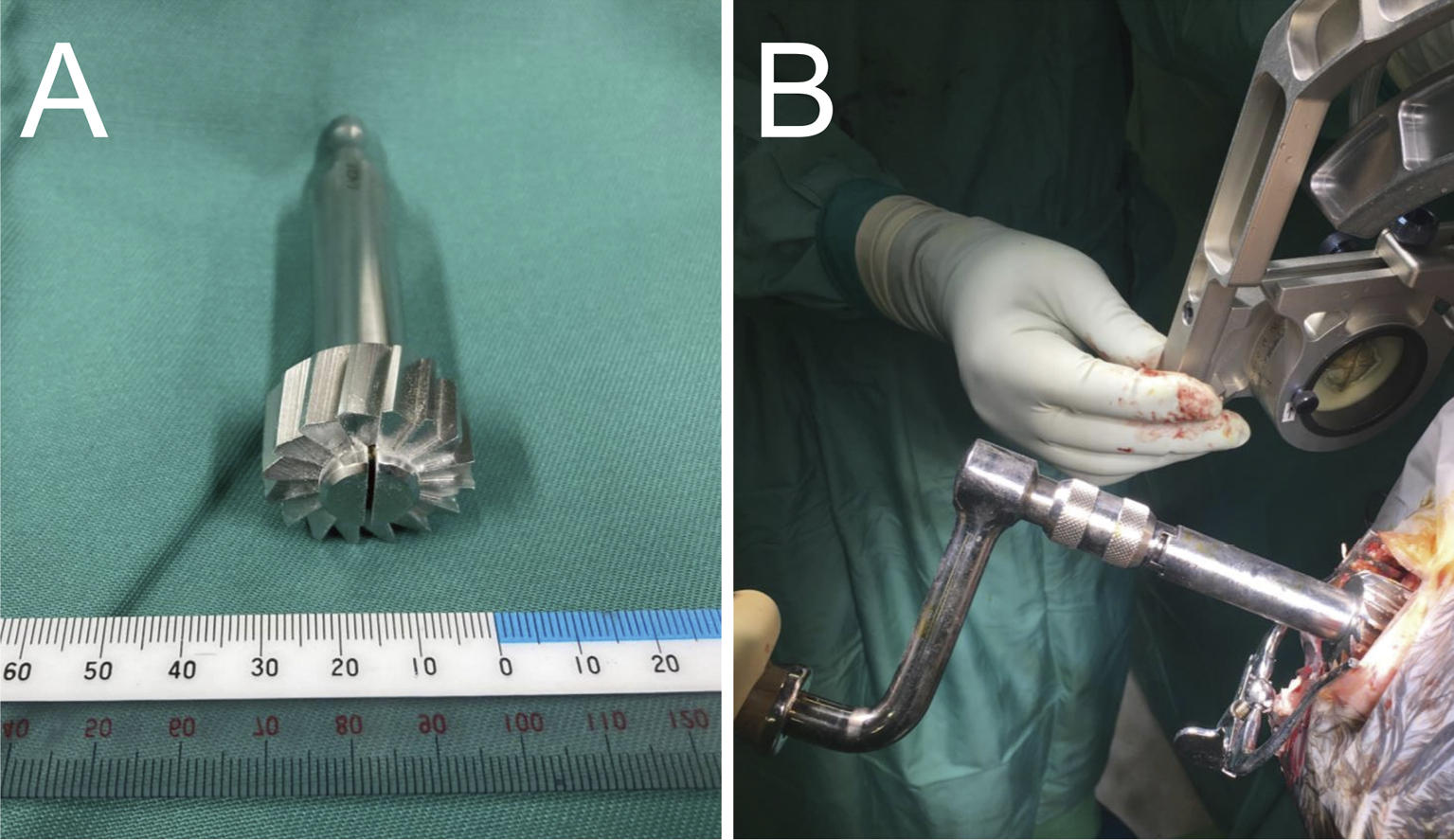- 著者
- Makoto SATOH Takeshi NAKAJIMA Keisuke OHTANI Takehiko KONNO Masayuki TETSUKA Kensuke KAWAI
- 出版者
- The Japan Neurosurgical Society
- 雑誌
- Neurologia medico-chirurgica (ISSN:04708105)
- 巻号頁・発行日
- pp.2023-0047, (Released:2023-07-10)
- 参考文献数
- 7
Insertion of a deep brain stimulating electrode is a commonly performed procedure. Burr hole caps play an important role in this procedure by immobilizing this electrode; however, burr hole caps could form scalp bumps, which can create further complications. The dual-floor burr hole technique could prevent the formation of scalp bumps. This technique has previously been used with older versions of burr hole caps and has proved to be successful. In recent years, modern burr hole caps with an internal electrode locking mechanism have become the mainstay for this procedure. However, modern burr hole caps differ considerably in diameter and shape from older burr hole caps. In the present study, a dual-floor burr hole technique was performed using modern burr hole caps. To accommodate the increase in diameters and changes in the shape of modern burr hole caps, a perforator with a 30-mm diameter was used for shaving the bone, and the bone shaving depth was altered. This surgical technique was applied to 23 consecutive deep brain stimulation surgeries without complications and was thus positively optimized for modern burr hole caps.
- 著者
- Makoto SATOH Takeshi NAKAJIMA Eiju WATANABE Kensuke KAWAI
- 出版者
- The Japan Neurosurgical Society
- 雑誌
- Neurologia medico-chirurgica (ISSN:04708105)
- 巻号頁・発行日
- pp.2022-0278, (Released:2023-01-20)
- 参考文献数
- 28
- 被引用文献数
- 5
Stereotactic neurosurgery is an established technique, but it has several limitations. In frame-based stereotaxy using a stereotactic frame, frame setting errors may decrease the accuracy of the procedure. Frameless stereotaxy using neuronavigation requires surgeons to shift their view from the surgical field to the navigation display and to advance the needle while assuming a physically uncomfortable position. To overcome these limitations, several researchers have applied augmented reality in stereotactic neurosurgery. Augmented reality enables surgeons to visualize the information regarding the target and preplanned trajectory superimposed over the actual surgical field. In frame-based stereotaxy, a researcher applies tablet computer-based augmented reality to check for the setting errors of the stereotactic frame, thereby improving the safety of the procedure. Several researchers have reported performing frameless stereotaxy guided by head-mounted-display-based augmented reality that enables surgeons to advance the needle at a more natural posture. These studies have shown that augmented reality can address the limitations of stereotactic neurosurgery. Conversely, they have also revealed the limited accuracy of current augmented reality systems for small targets, which indicates that further development of augmented reality systems is needed.

